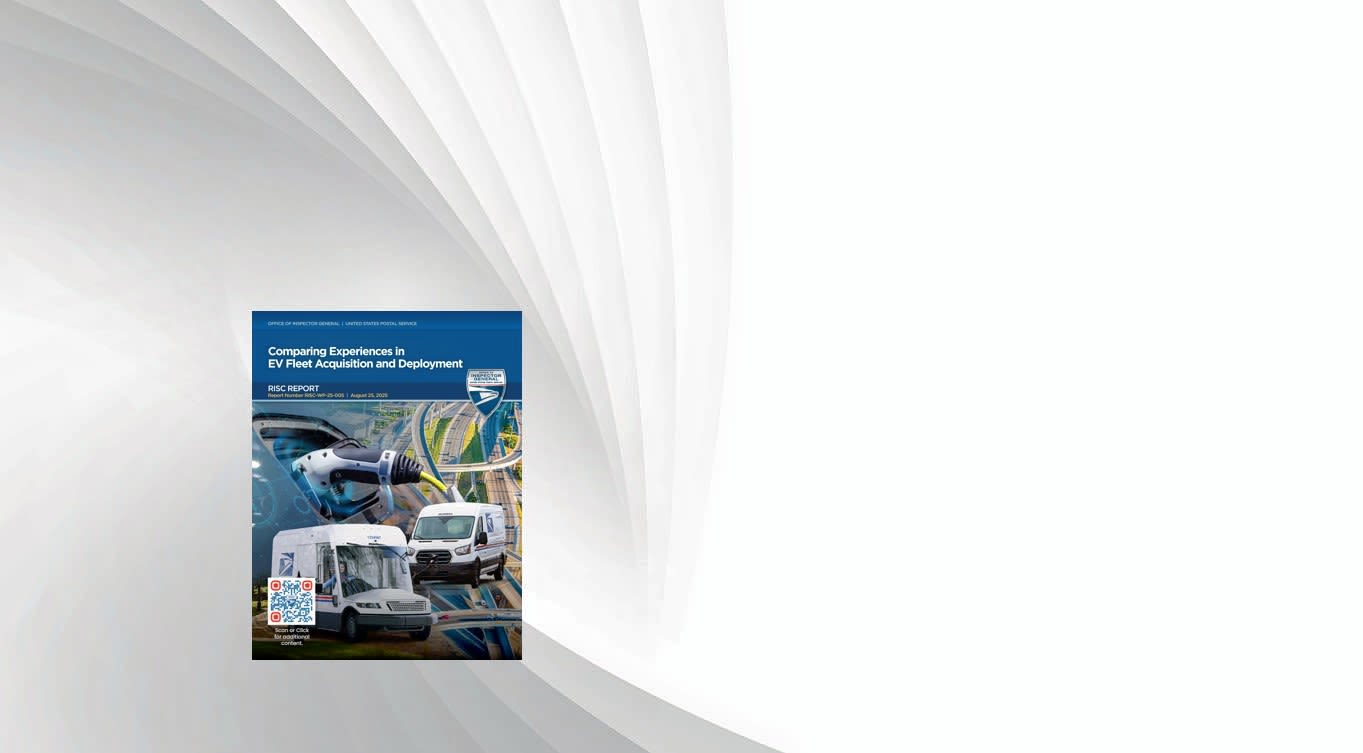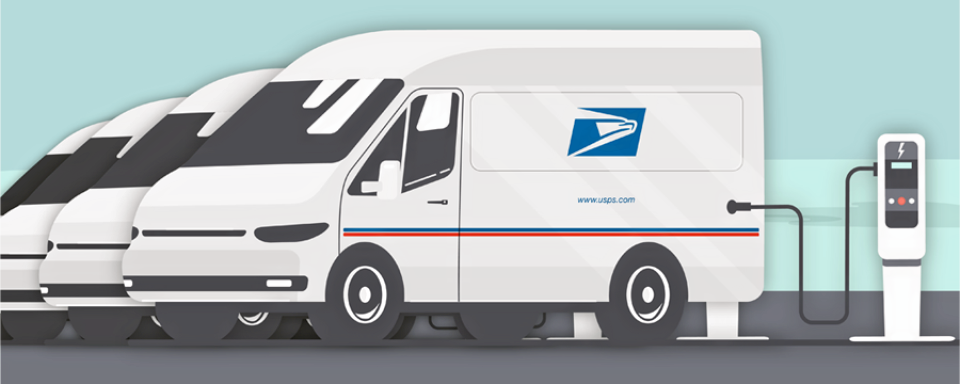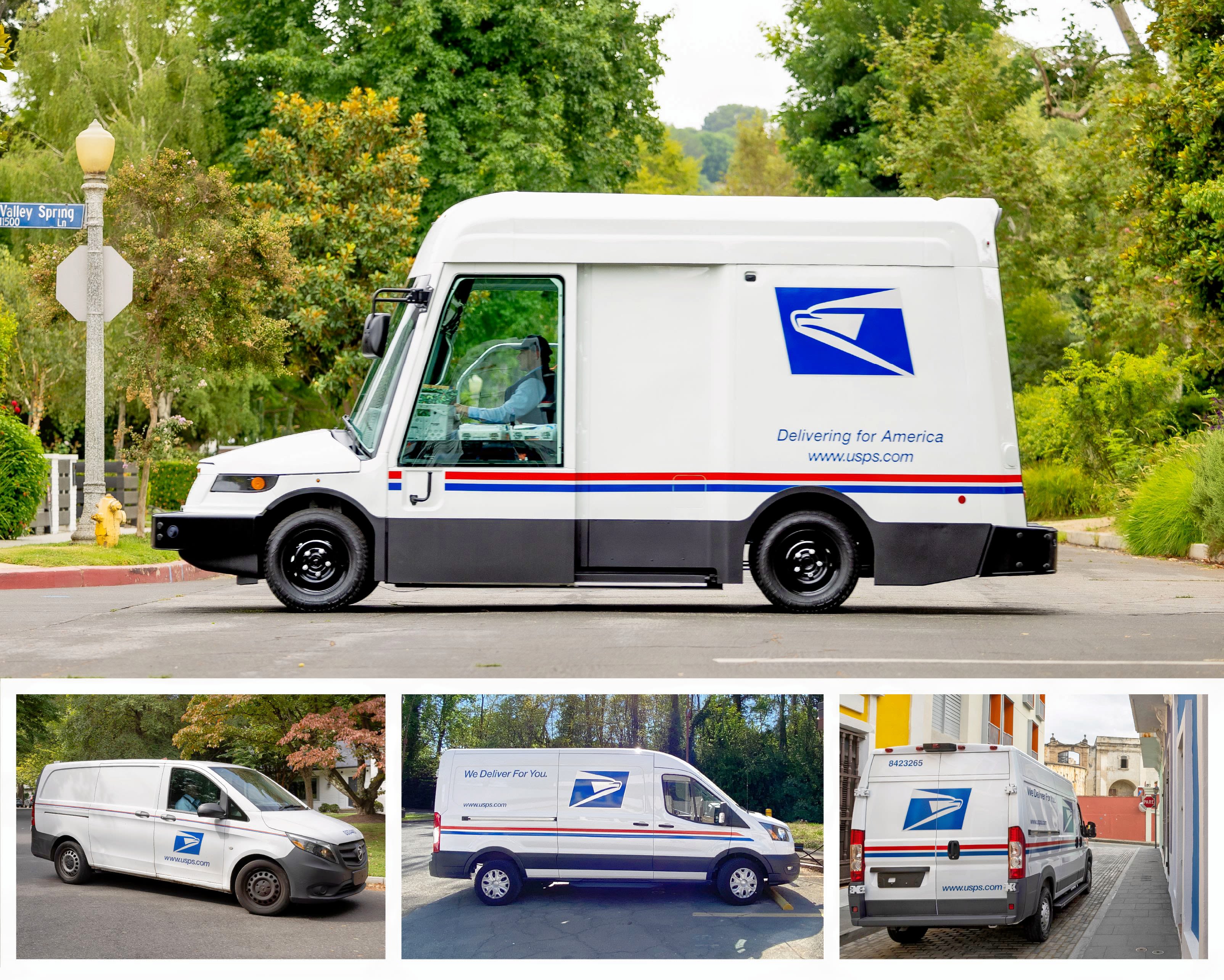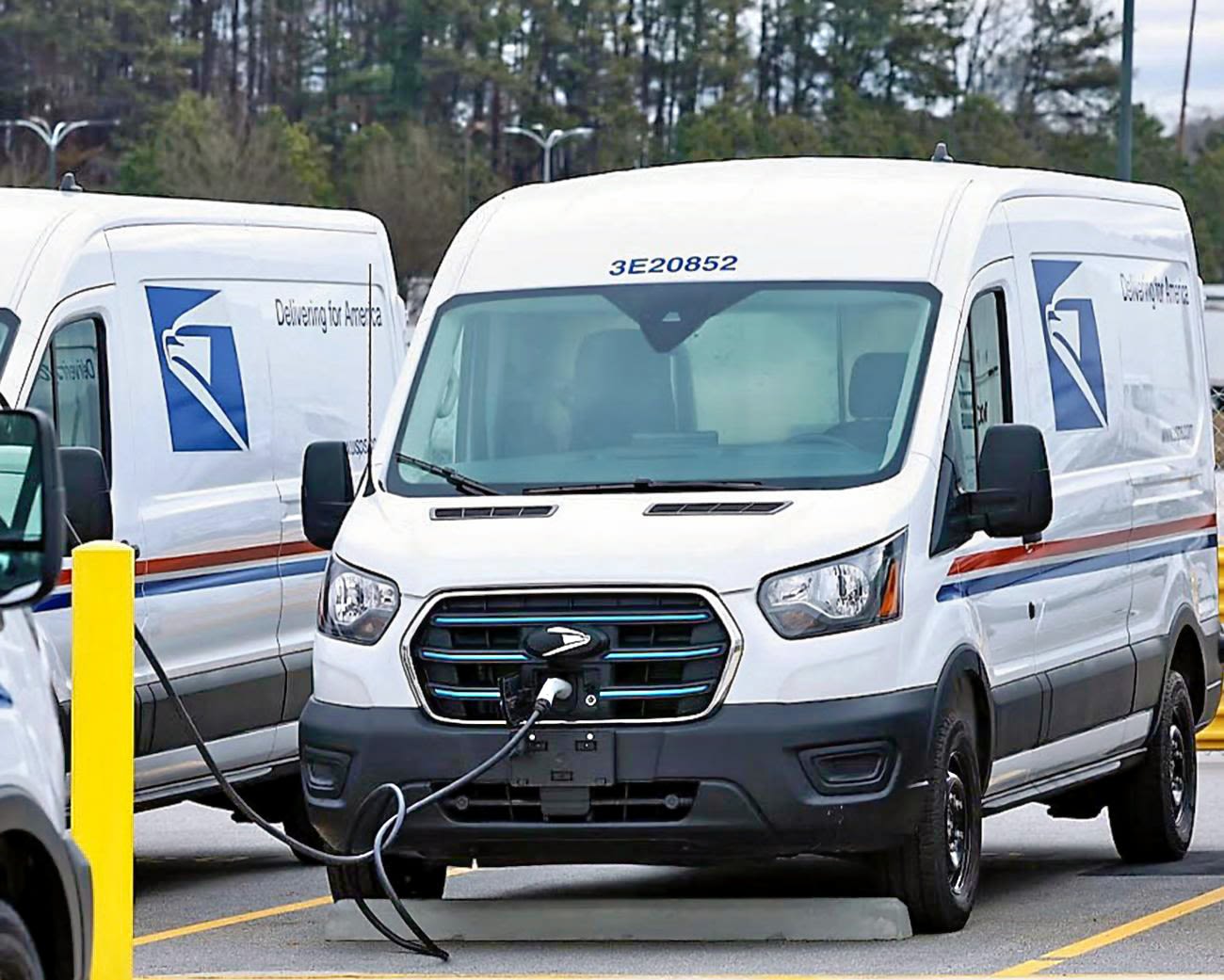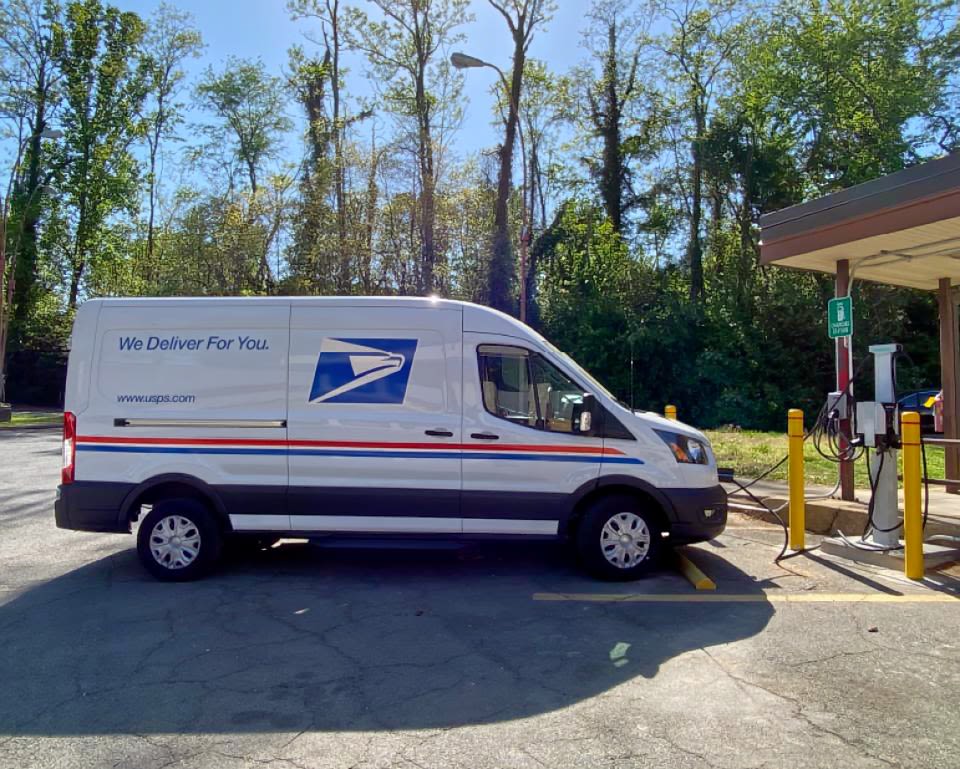Comparing Experiences in EV Fleet Acquisition and Deployment
- Research and Insights Solution Center -
United States Postal Service Office of Inspector General
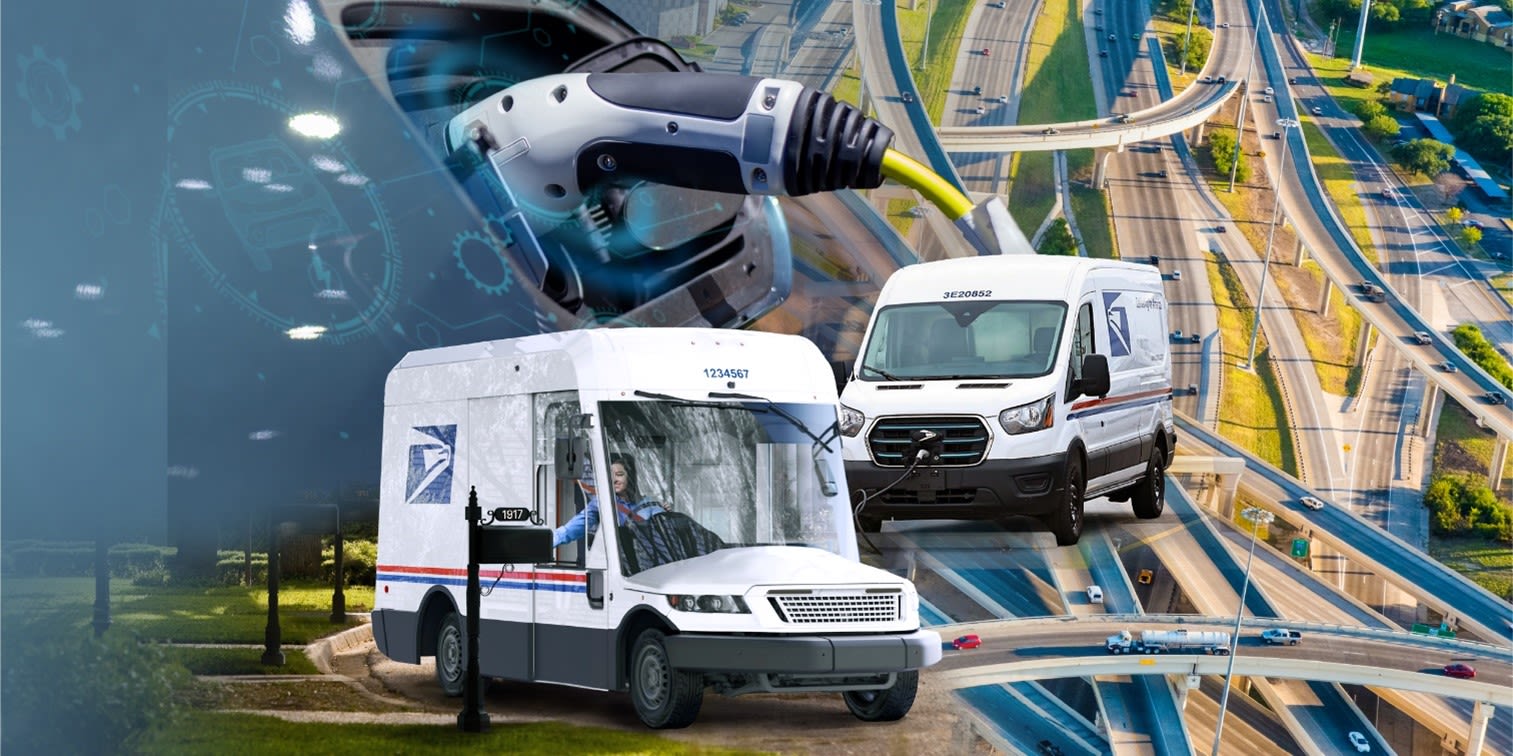
For more than a decade, the United States Postal Service has needed new delivery vehicles to replace its 150,000 Long-Life Vehicles (LLVs) and Flex-Fuel Vehicles (FFVs).
The Postal Service began seeking input on a new custom delivery vehicle in 2014 and received its first Next Generation Delivery Vehicles (NGDVs) in 2024, including both electric and gas-powered vehicles.
The USPS Office of Inspector General (USPS OIG) examined key aspects of the Postal Service’s electric vehicle acquisition and deployment along with those of other large national posts and private delivery companies that have acquired EVs and charging infrastructure.
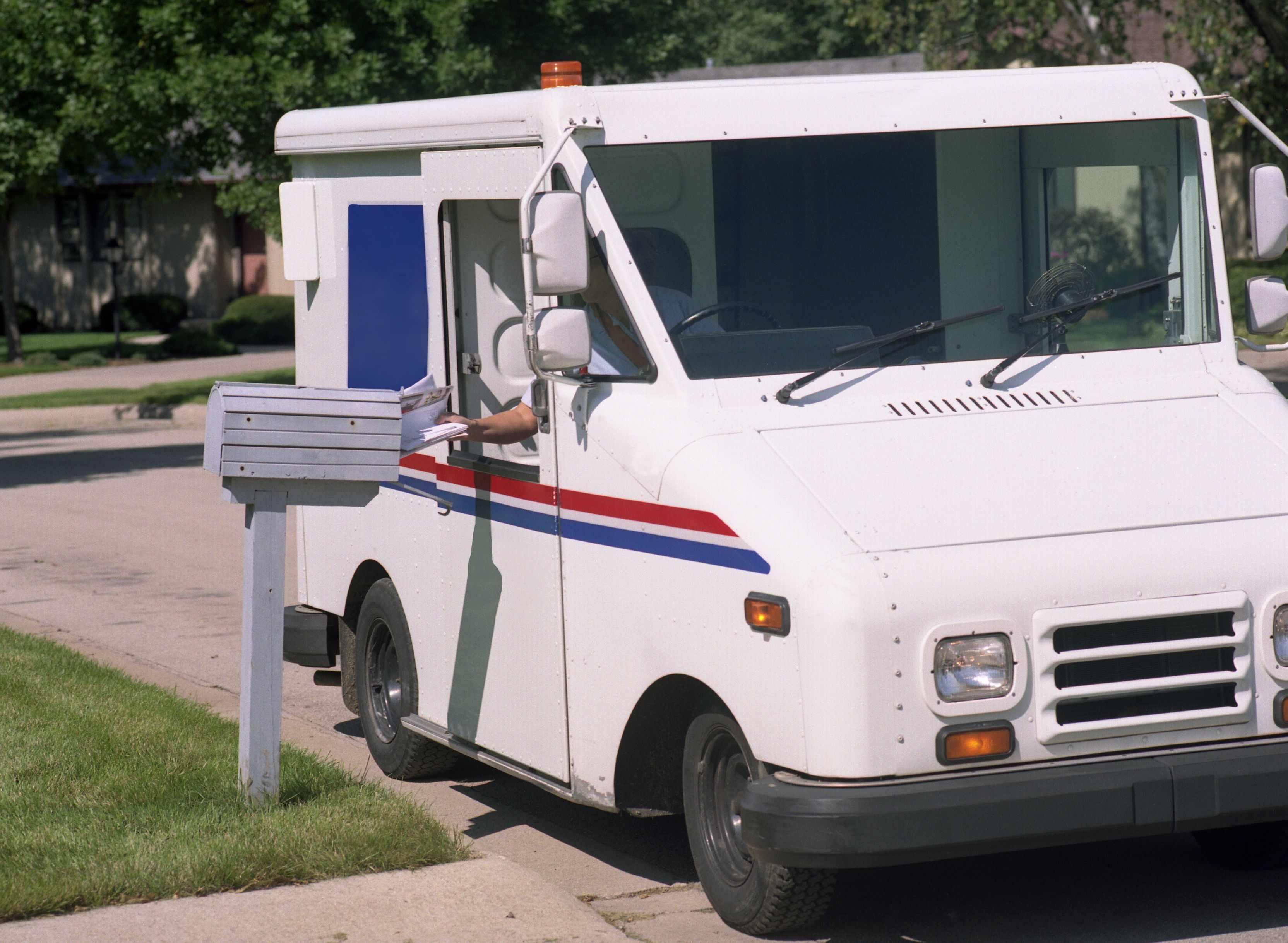

Current USPS Fleet
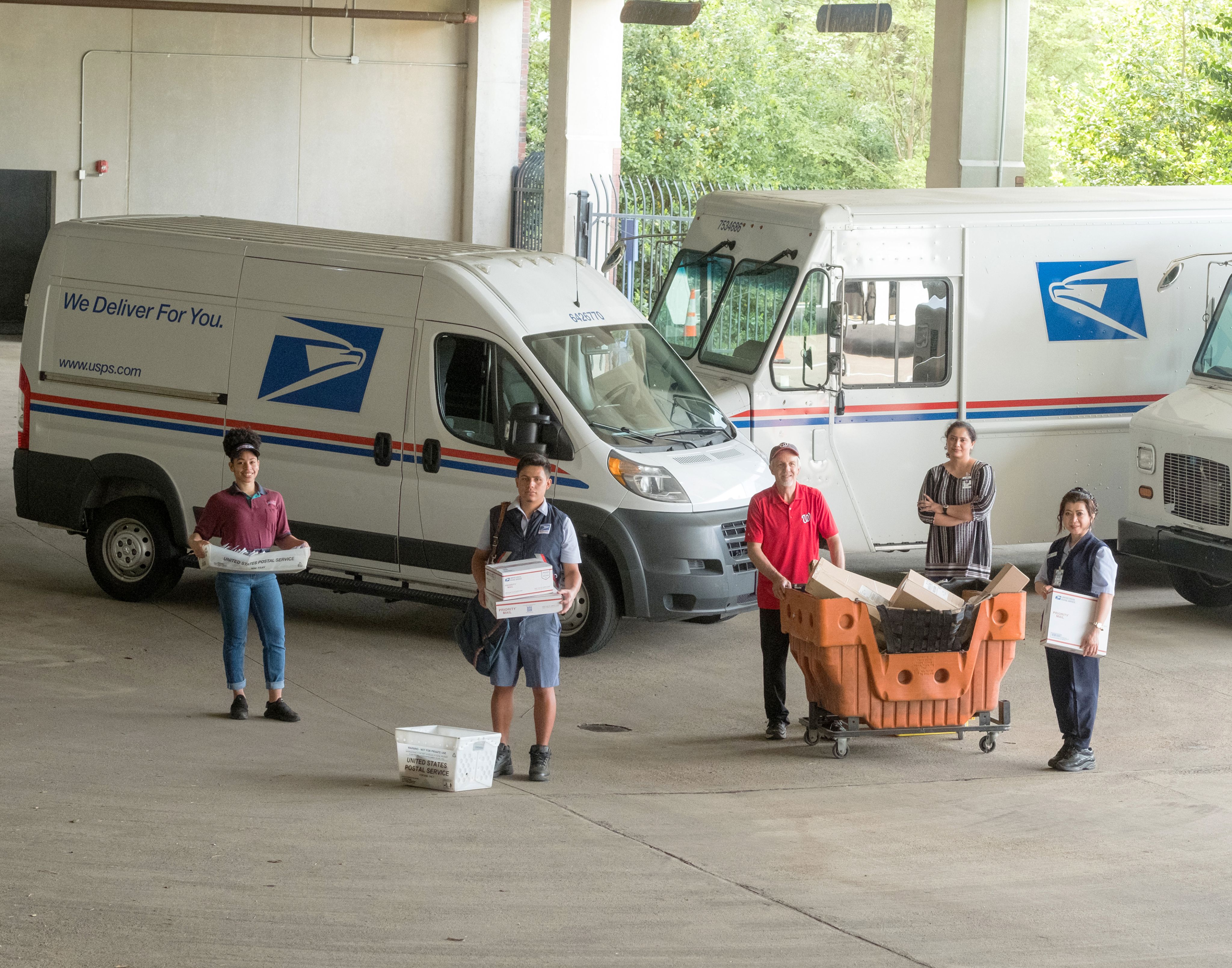
The workhorses of the Postal Service's delivery fleet are the Long-Life Vehicle, the Flex-Fuel Vehicle, and the Next-Generation Delivery Vehicle.
The iconic core of this fleet for nearly 40 years has been the Long-Life Vehicle (LLV), first deployed in 1986 and designed to have a lifespan of 24 years. The LLV has lived up to its name, with most of the vehicles still operating well beyond their expected years of service.
The Flex-Fuel Vehicle (FFV), which looks similar to the LLV and also makes up a prominent portion of the postal fleet, was first acquired in 2000 and has similarly been reaching the end of its intended 24-year lifespan.
The Next-Generation Delivery Vehicle (NGDV) is the latest custom USPS vehicle, with a 2021 contract award allowing for the purchase of both conventional gas-powered and battery electric versions.
The Postal Service’s commitment to acquiring a significant number of electric delivery vehicles (EVs) aligns with decisions made by other delivery organizations.
However, the Postal Service’s strategic approaches to EV acquisition differ, due to organizational needs, vehicle operational capabilities, financial resources, and regulatory environments.
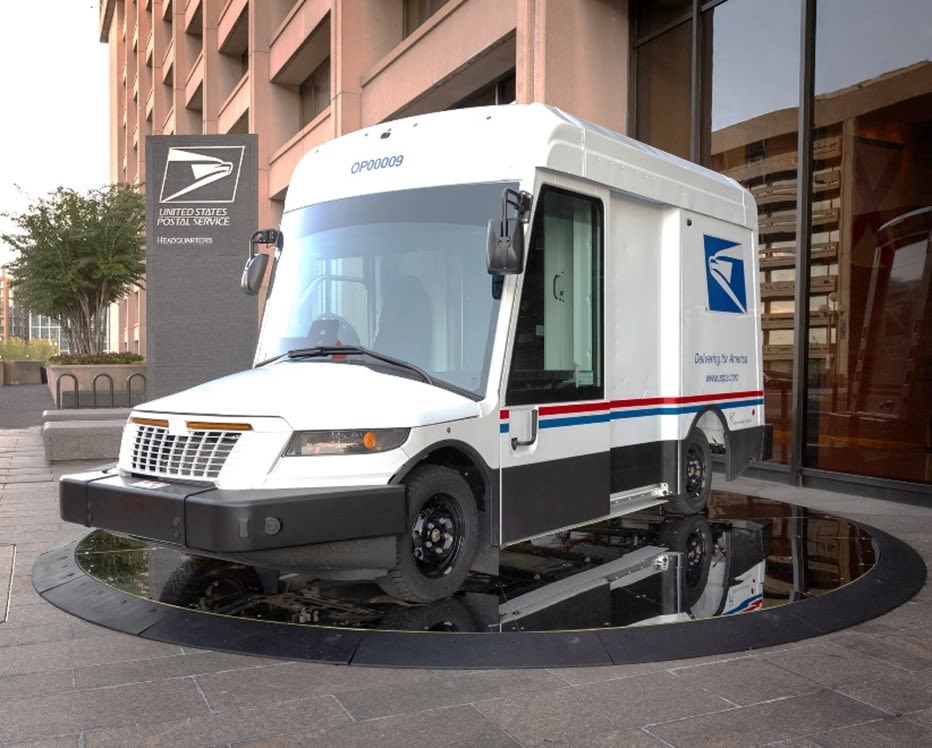
It Took USPS a Decade to Acquire a Custom Electric Vehicle:
2014
USPS seeks employee input into new custom delivery vehicles
2015
USPS issues RFI for NGDV prototypes; prequalifies 15 suppliers
2016
USPS selects six suppliers to provide prototypes; stipulates some vehicles have alternate fuel capabilities
2019
USPS concludes testing 44 gas, EV, and hybrid prototypes; issues RFPs to 5 suppliers
2020
Suppliers submit production proposals for both gas-powered and electric NGDVs
2021
USPS awards NGDV contract to Oshkosh, commits to at least 10% electric vehicles
2022
USPS submits order to Oshkosh for 50,000 NGDVs, including 10,019 EVs
USPS issues RFP for charging infrastructure providers
Congress passes Inflation Reduction Act, providing USPS with $3 billion for EVs and charging infrastructure
2023
USPS announces contract with Ford to buy 9,250 E-Transit EVs (pictured)
USPS awards contracts to three EV infrastructure suppliers for more than 14,000 charging stations
First Sorting & Delivery Center (S&DC) completes construction of charging stations and infrastructure
2024
First Ford E-Transits deployed
First electric and gas NGDVs acquired
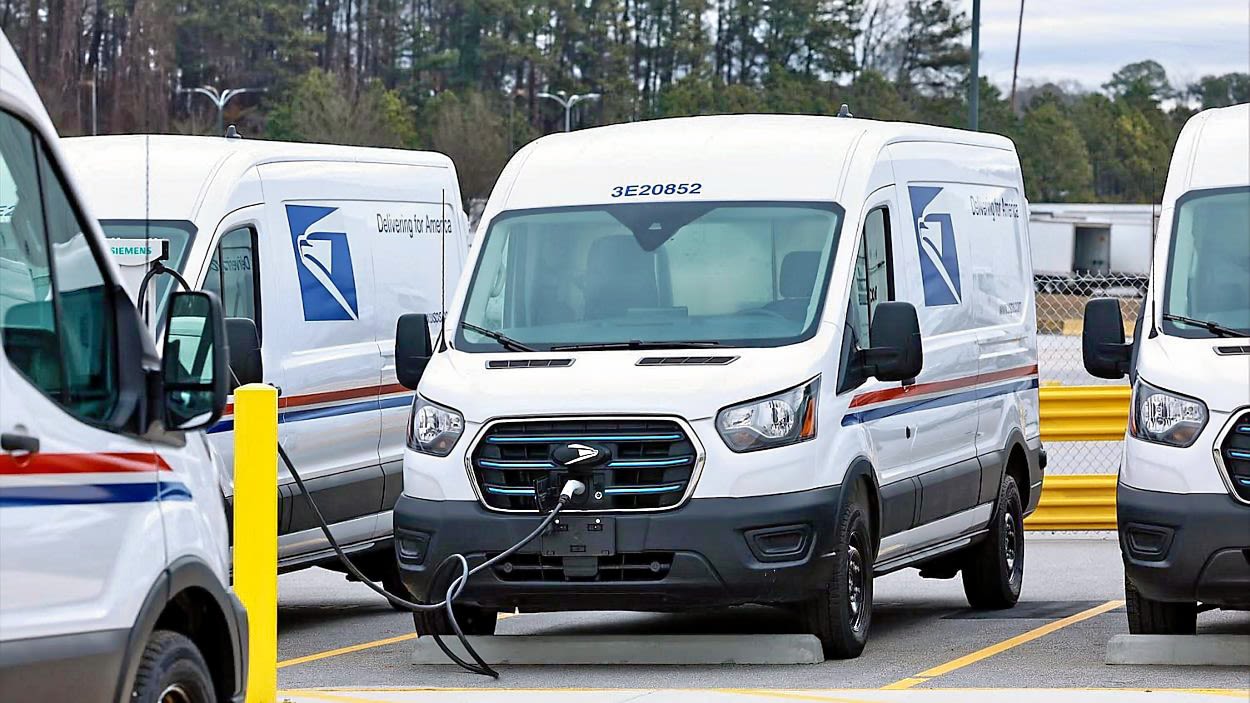

Why Did It Take So Long to Acquire EVs?
The Postal Service decided to pursue a custom-built electric delivery vehicle.
The Postal Service chose to design and develop a new custom vehicle to meet the agency’s specific needs for right-hand delivery vehicles. Acquiring custom vehicles requires working with suppliers on a new vehicle design and generally necessitates more testing and troubleshooting before a vehicle is ready to deploy.
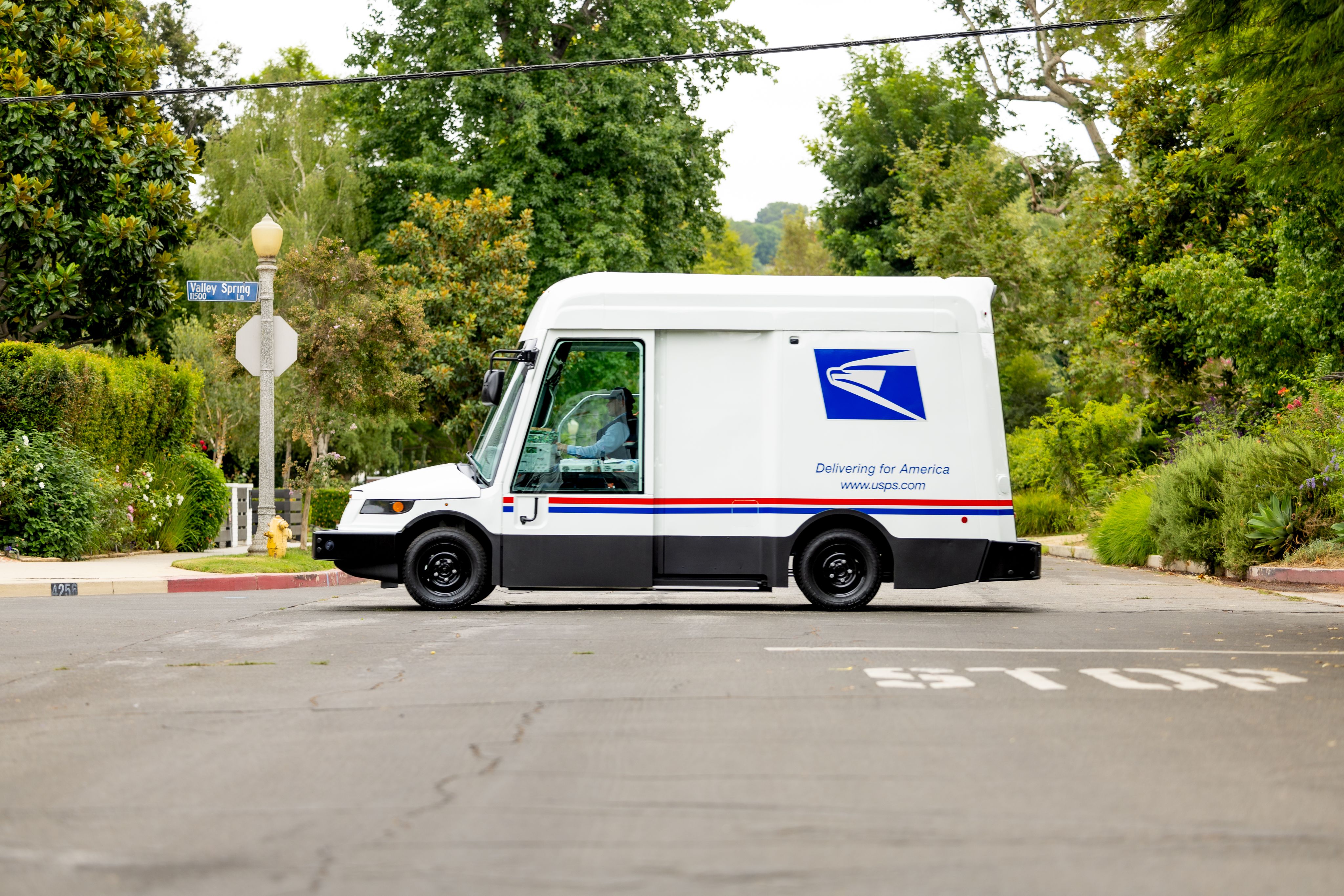
The NGDV process did not begin with a firm commitment to electrification.
The Postal Service began the NGDV project in 2014 with the intention of replacing its aging fleet, but not with the specific goal of acquiring electric vehicles. USPS gradually increased its commitment to EVs; the $3 billion provided through the 2022 Inflation Reduction Act (IRA) allowed USPS to commit to a majority electric fleet.
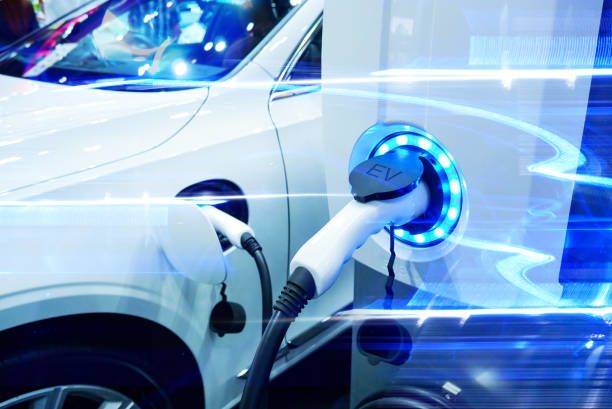
The Postal Service's status as a public agency has contributed to a more cautious acquisition approach.
USPS chose to use a competitive bidding process with extensive prototype development and testing. While the process prioritized transparency and stakeholder engagement, developing, delivering and testing 44 vehicle prototypes contributed substantially to project delays.
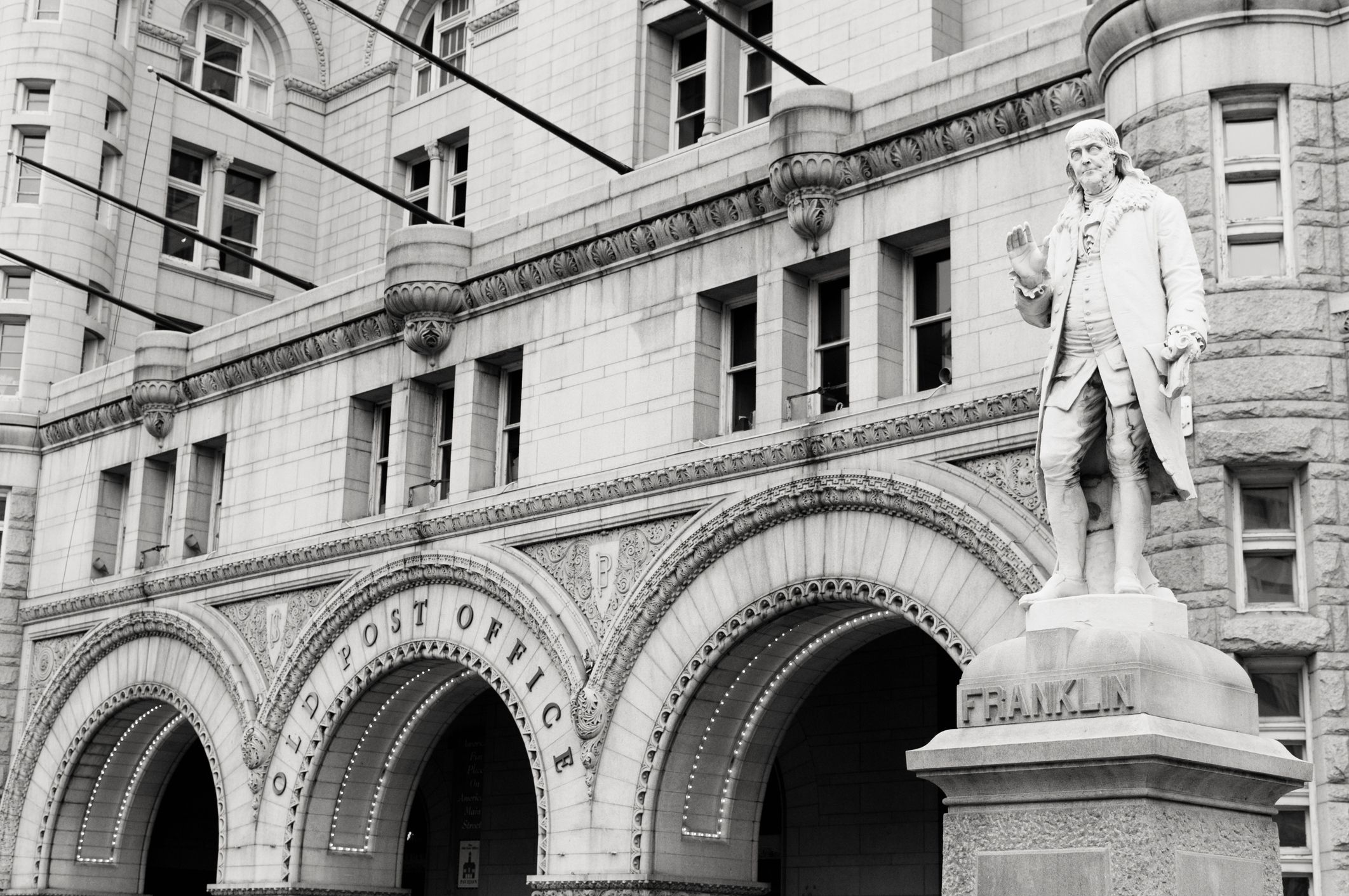
Statutory limits to borrowing and lack of financial resources put USPS at a financial disadvantage.
The Postal Service has financial constraints compared to some private sector counterparts in funding large procurement efforts, and these constraints affected decision-making for the NGDV development and acquisition process.

The Postal Service's charging infrastructure rollout was delayed from its original plans.
Reasons for delay included weather, site-specific conditions requiring additional construction, and coordination issues with local utilities for capacity upgrades and procurement of electrical equipment.
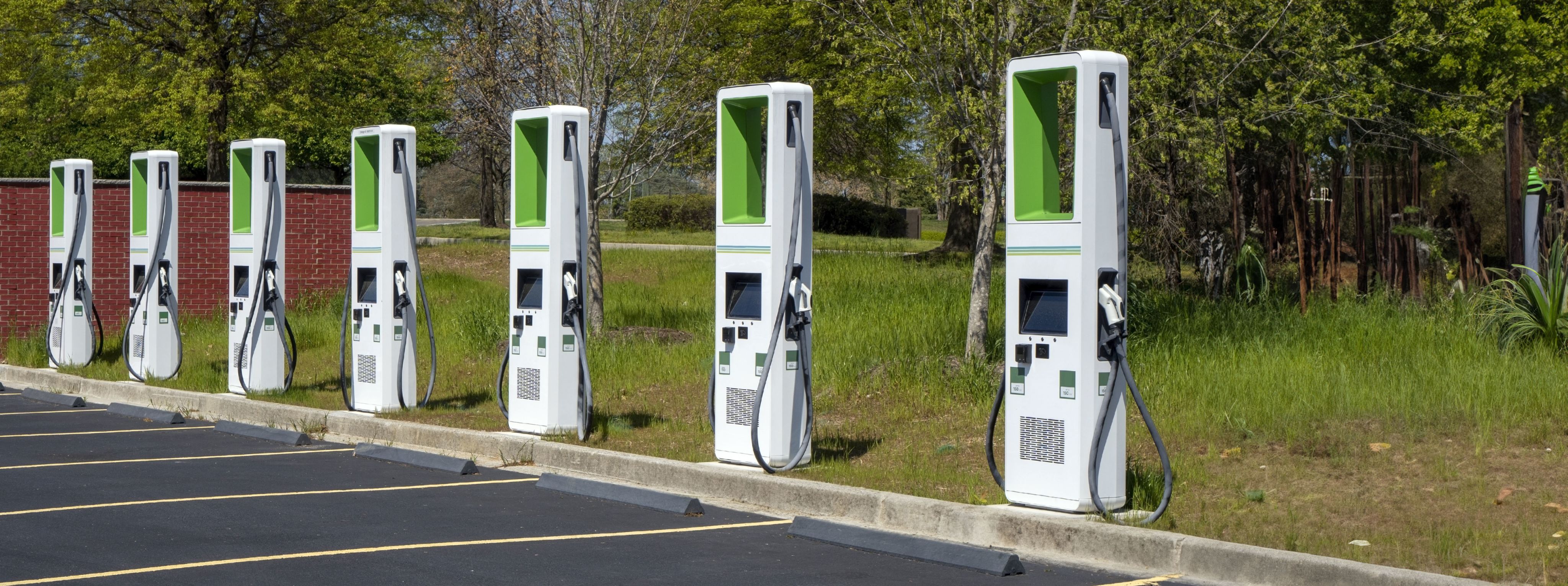
Lessons Learned for Future Procurement Efforts:
Delays in vehicle acquisition pushed back expected cost savings.
These delays postponed the cost savings associated with operating more efficient vehicles, with the Postal Service continuing to rely on aging LLVs and FFVs to serve the majority of delivery routes.
The EV market has grown and evolved, and a greater variety of vehicles that can meet a wider range of delivery needs are now available.
The Postal Service has been evaluating new options on the commercial market that may help it build out its electric fleet in the coming years.
Starting with a defined intention to electrify the fleet could have streamlined the acquisition and deployment process.
For future projects, the Postal Service would benefit from quickly narrowing options to more efficiently use scarce time and resources.
A better balance between transparency, risk reduction, and timely action can improve process efficiency.
Future projects may benefit from more focused, streamlined acquisition processes that can yield suitable results significantly faster.
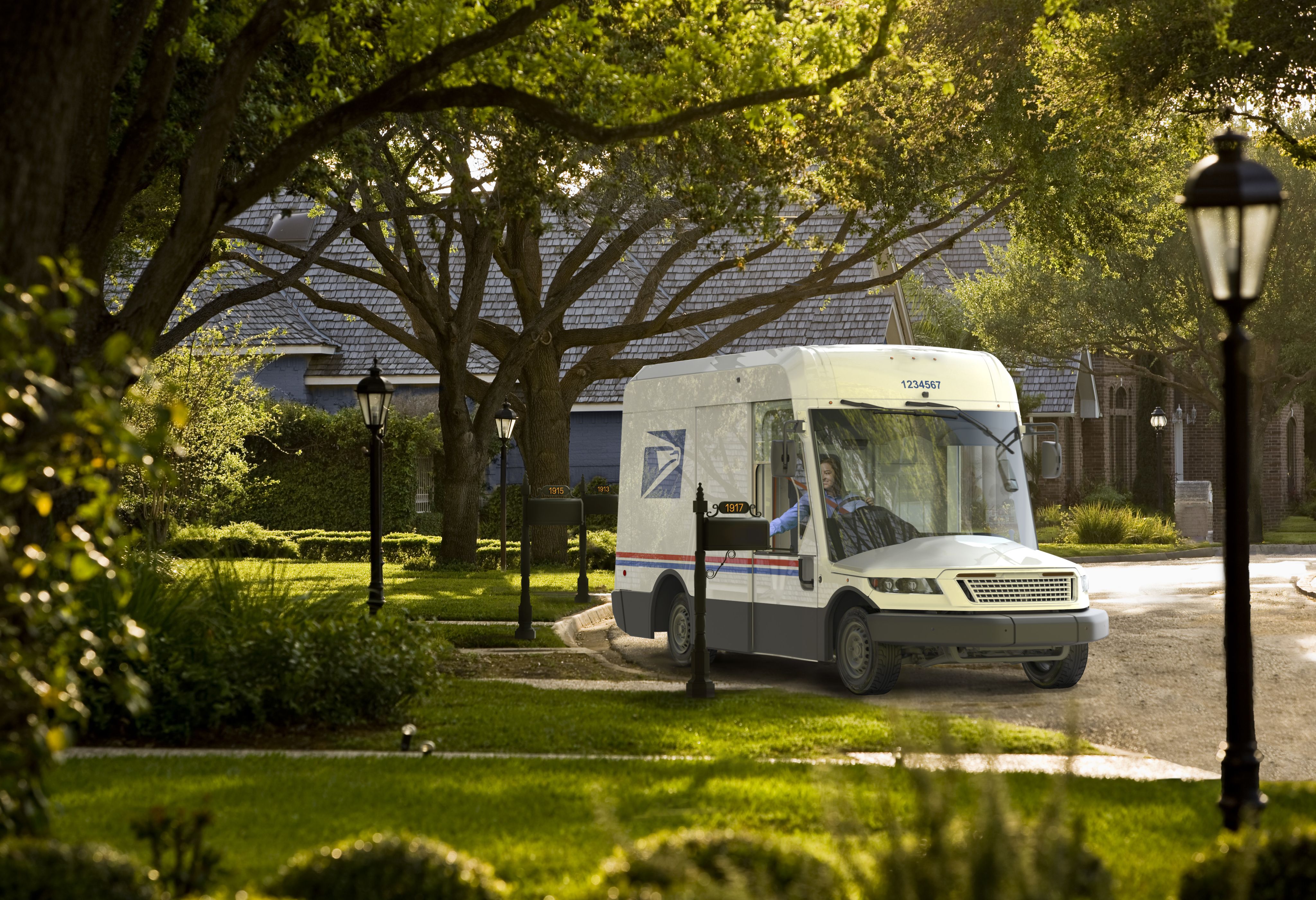

Comparing Experiences in EV Fleet Acquisition and Deployment
